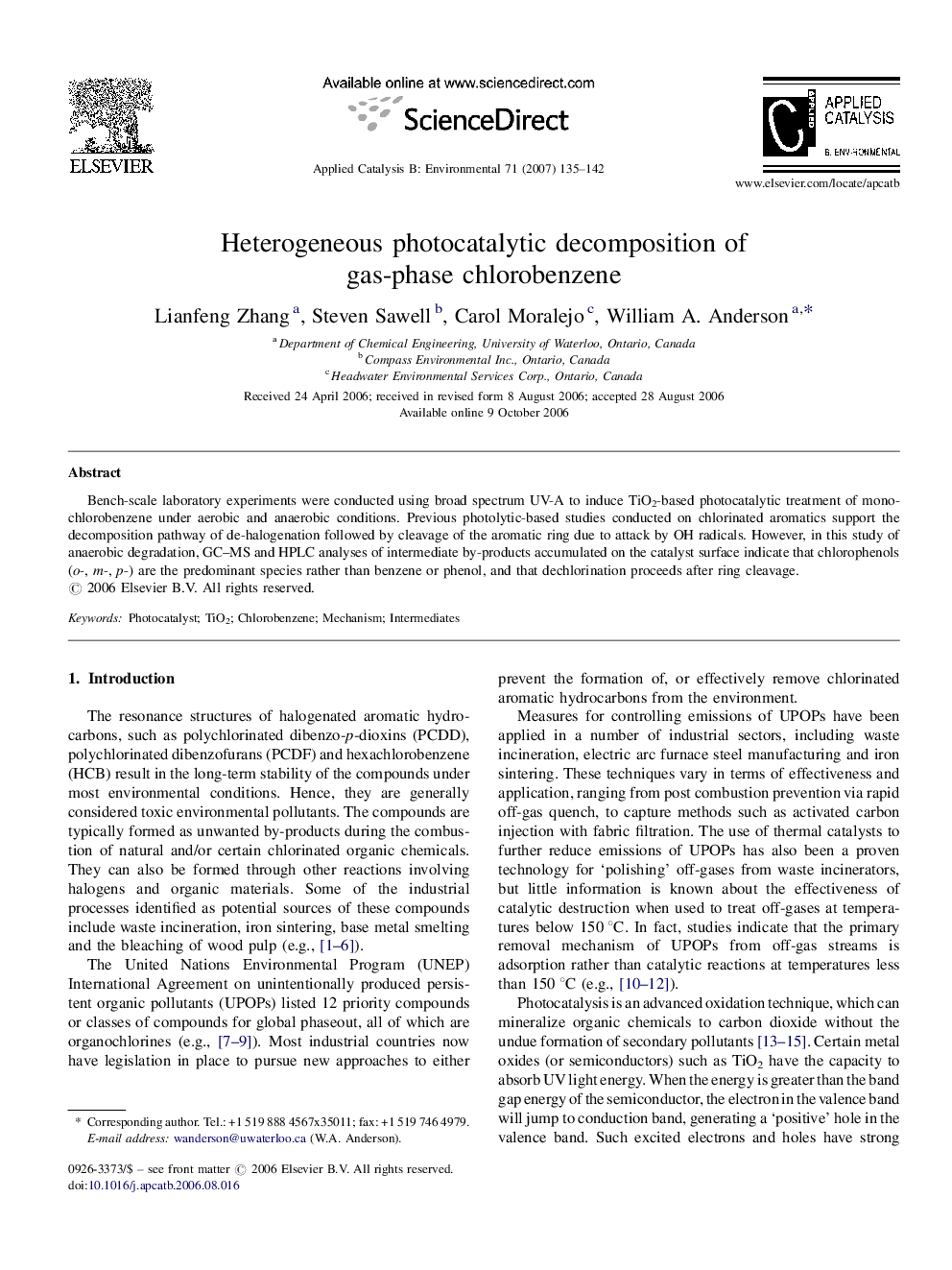| Article ID | Journal | Published Year | Pages | File Type |
|---|---|---|---|---|
| 48975 | Applied Catalysis B: Environmental | 2007 | 8 Pages |
Abstract
Bench-scale laboratory experiments were conducted using broad spectrum UV-A to induce TiO2-based photocatalytic treatment of mono-chlorobenzene under aerobic and anaerobic conditions. Previous photolytic-based studies conducted on chlorinated aromatics support the decomposition pathway of de-halogenation followed by cleavage of the aromatic ring due to attack by OH radicals. However, in this study of anaerobic degradation, GC–MS and HPLC analyses of intermediate by-products accumulated on the catalyst surface indicate that chlorophenols (o-, m-, p-) are the predominant species rather than benzene or phenol, and that dechlorination proceeds after ring cleavage.
Related Topics
Physical Sciences and Engineering
Chemical Engineering
Catalysis
Authors
Lianfeng Zhang, Steven Sawell, Carol Moralejo, William A. Anderson,
